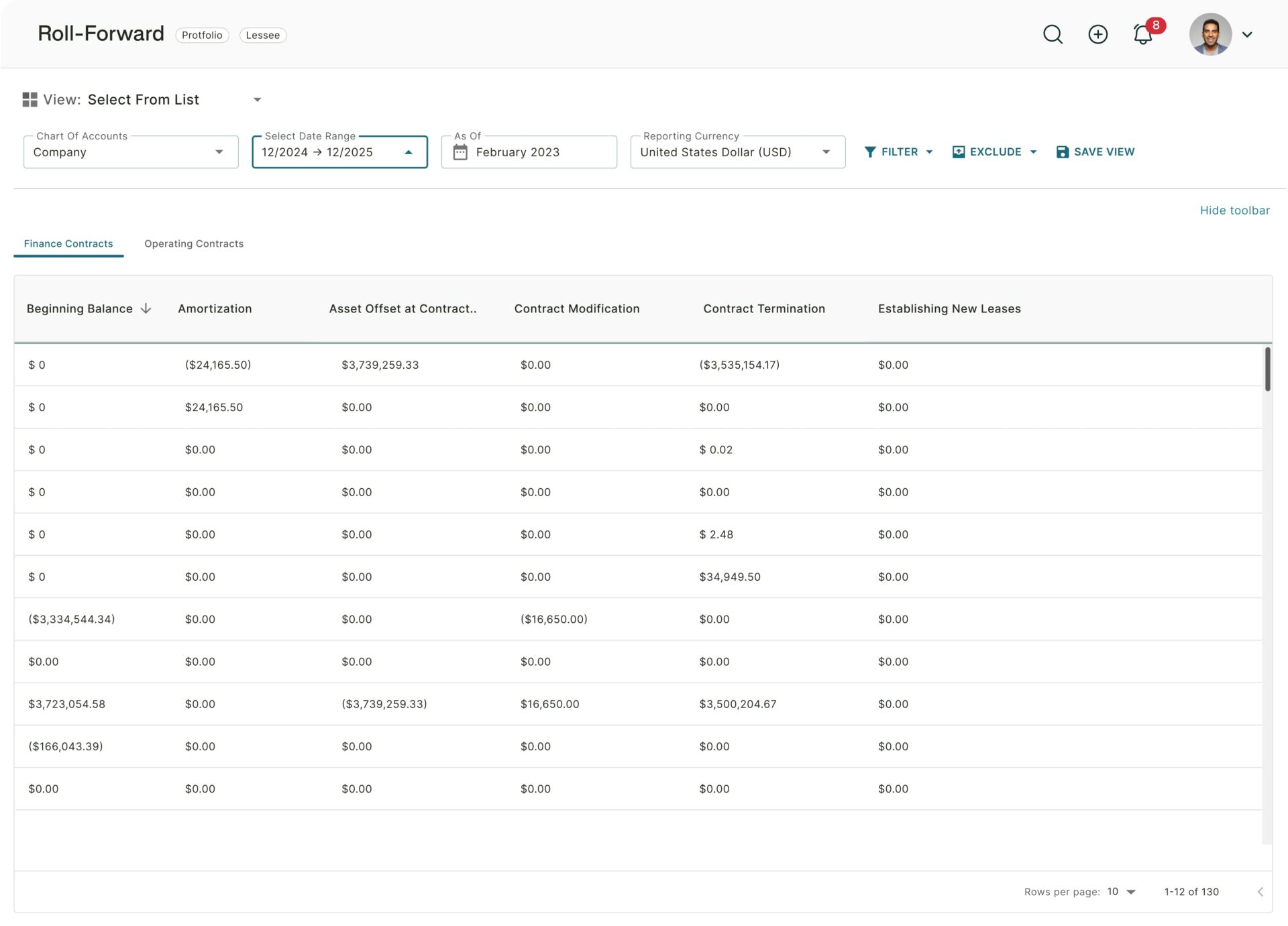With the introduction of ASC 842, the accounting treatment for leases has changed significantly from previous standards, specifically ASC 840.
One of the key elements of complying with ASC 842 is how to calculate the present value of future lease payments. This calculation is essential, as it is used to measure the lease liability and by extension the lease asset.
Ultimately, the present value of future lease payments is a pivotal figure when it comes to all ASC 842 compliance.
In this article, we’ll look at how you can calculate the present value of future lease payments with ease, and extend this across your entire leasing function.
ASC 842’s language on present value of future lease payments
ASC 842 provides robust guidance on how to calculate the present value of future lease payments.
Present value of future leases: lease payments
ASC 842 requires the recognition of a right-of-use asset and a lease liability. A critical figure in calculating these amounts is the present value of the lease payments.
The first question to ask is: what constitutes “lease payments?”
ASC 842 defines lease payments to include the following:
- Fixed payments, less any lease incentives
- Variable lease payments
- Exercise price of an option to buy the underlying asset – if the lessee is reasonably certain to exercise that option
- Penalties for terminating the lease
- Amounts probable of being owed by the lessee under residual value guarantees
Present value of future leases: discount rate
The lease liability specifically should be measured at the present value of yet-to-be-paid lease payments, discounted using the discount rate for the lease at commencement.
Note that calculating the lease asset or the “right-of-use” asset is dependent on the value of the lease liability. As a refresher, it is calculated as:
- The initial measurement of the lease liability
- Any lease payments made to the lessor at or before the commencement, less any lease incentives received
- Any initial direct costs incurred by the lessee
Zeroing in on the discount rate is a little more complex than it sounds. In this case, the discount rate is the rate “implicit in the lease,” when that number is readily determinable. If not readily determinable, the company’s incremental borrowing rate should be used.
The incremental borrowing rate is defined as the “rate of interest that a lessee would have to pay to borrow on a collateralized basis over a similar term an amount equal to the lease payments in a similar economic environment.”
Present value of future leases: calculation example
Acme Corporation entered into 40 different leases of machines, with terms of between 3 and 5 years. Annual payments ranged between $20,000 and $80,000.
The issue is that the individual lease contracts do not provide information about the rate implicit in the lease. What rate should Acme Corporation use when calculating the present value of future lease payments?
Assume Acme Corporation’s incremental borrowing rate on $20,000 – $80,000 would be approximately 4 percent. Acme Corporation concludes that its incremental borrowing rate of 4 percent is an appropriate discount rate for the 40 leases.
Another common method to determine the incremental borrowing rate is to look at the fixed rate at which a lessee could borrow a similar amount, in the same currency, over the same term, and with similar collateral as at the lease commencement date (see ASC 842 for further examples.)
Staying ahead when calculating present value of future lease payments
There are numerous ways to calculate the present value of future lease payments. These include online calculators, and of course Microsoft Excel.
With many organizations today having multiple leases, each with vastly different terms, rates, and conditions, using these tools is likely to cause more headache overall, even though they can be used for quick calculations, or to determine present values of a small number of leases.
This is where automated lease accounting software comes into play. A leading lease accounting software provider like Trullion can automate your lease accounting from end to end.
This includes scanning PDFs or Excel files and using AI to determine details of a lease – including pertinent information such as amounts, commencement dates, and so on. It even suggests journal entries and disclosure, offers visibility across your team, makes external audits a cinch and ensures constant compliance with accounting standards that are notorious for changing rapidly.
If you want to save the time, effort and energy – not to mention money – that your organization currently spends manually dealing with leases, your world is about to get a whole lot better. By simply adding the right product, you can free up yourself and your team for high-impact activities, while reducing errors and ensuring ongoing compliance.
To find out more about implementing Trullion in your organization, get in touch today.





